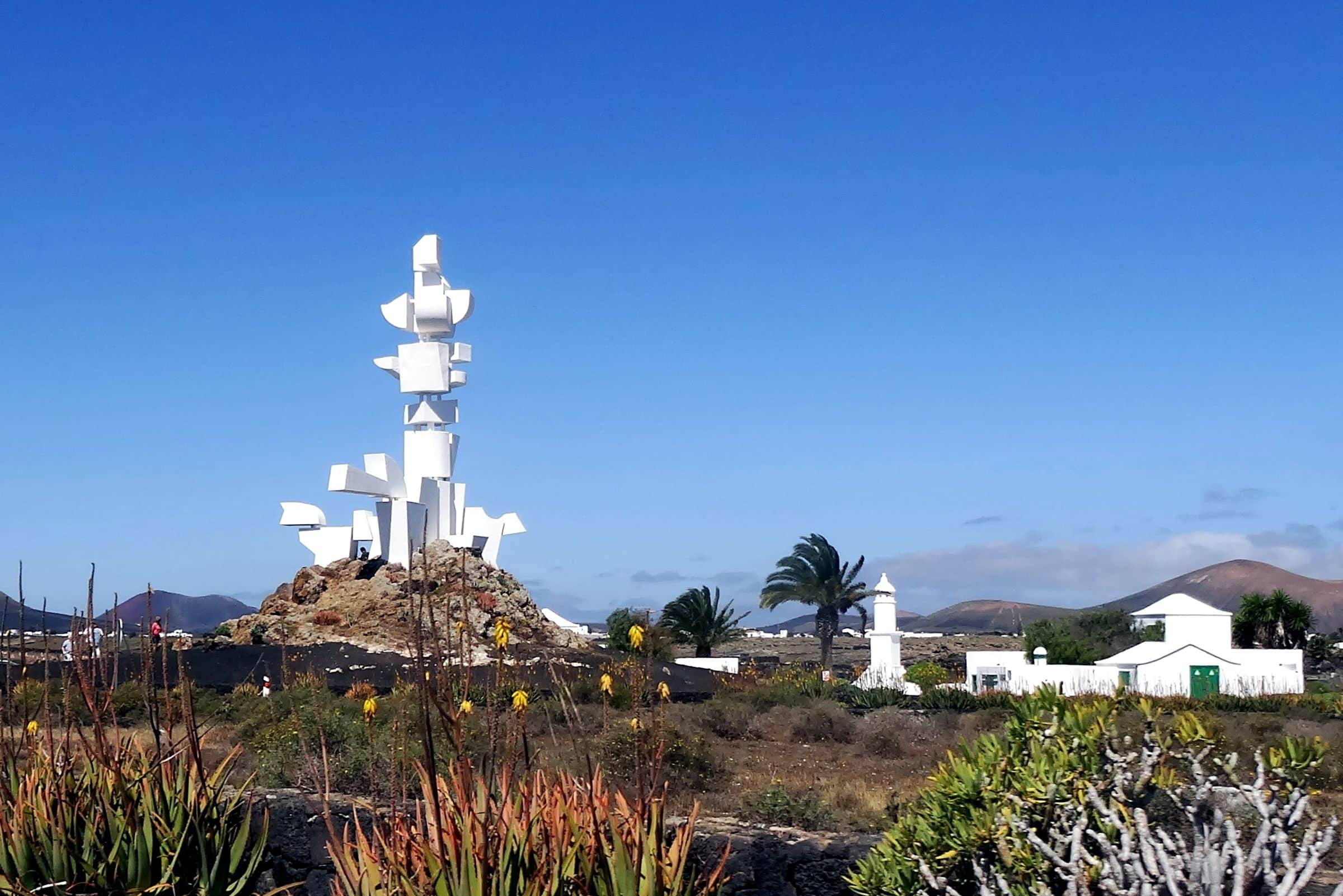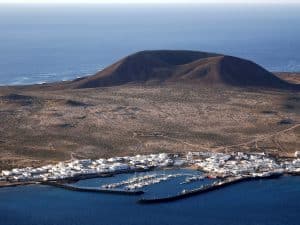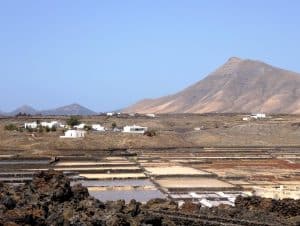Monumento al Campesino and Casa Museo del Campesino
The MONUMENTO AL CAMPESINO

The approximately 15 meter high sculpture, directly at the roundabout near Mozaga, is built from water tanks of former fishing boats.
Dedicated to the hard work of the farmers of the island of Lanzarote, this sculpture reminds César Manrique of the importance of water and seafaring for the Canary Islands.
A farmer with his dog and the traditional working animals donkey and dromedary are strongly abstracted here.
On the site next to it is the CASA – MUSEO DEL CAMPESINO – the Farmers’ Museum.
An estate restored by Manrique, which, like the Monumento al Campesino, is dedicated to the island’s farmers and their architecture.
Admission to the Museo del Campesino is free. Here you get to know traditional work as well as viticulture and handicrafts such as embroidery, basket weaving, leather processing and pottery on Lanzarote. There is also information on the island’s bodegas. Here you can also buy wines that you won’t find everywhere else.
In the courtyard there is a cosy café where breakfast, tapas and other small dishes are served.
Opening hours: daily 10 a.m. – 6 p.m.
The CASA – MUSEO DEL CAMPESINO, for several years now, has also included a beautiful and spacious restaurant, which is built underground in a lava tunnel,
which is also suitable for larger events.
This is open from 1 p.m. – 4 p.m.
Monumento al Campesino and Casa – Museo del Campesino are located in Mozaga, at a central roundabout, about 2 km outside of San Bartolome.
The little souvenir shop in the Museum sells tickets for official events of the Cabildo. E.g. for Concerts in Jameos del Agua.
Casa – Museo del Campesino
MON-SUN 10am-6pm
Admission free









































 La Graciosa is usually only viewed from
La Graciosa is usually only viewed from 














 Mirador de Salinas is signposted and offers a great view over Salinas de Janubio, that depending on the light, appear in various colors. The salt works are a remnant of the past. In the first part of the 20th century up to 10 000t of salt were produced each year. It’s best to leave your car in the parking lot of the restaurant Mirador las Salinas. Parking is free and from the terrace one can enjoy views over the salt flats.
Mirador de Salinas is signposted and offers a great view over Salinas de Janubio, that depending on the light, appear in various colors. The salt works are a remnant of the past. In the first part of the 20th century up to 10 000t of salt were produced each year. It’s best to leave your car in the parking lot of the restaurant Mirador las Salinas. Parking is free and from the terrace one can enjoy views over the salt flats.



















